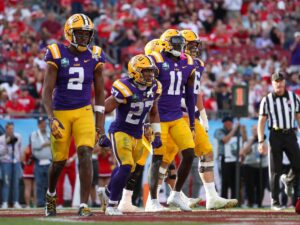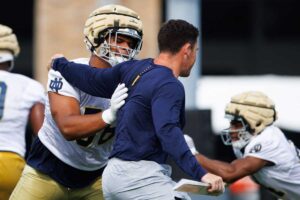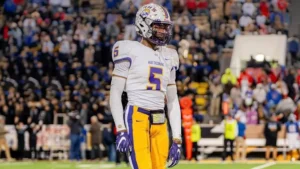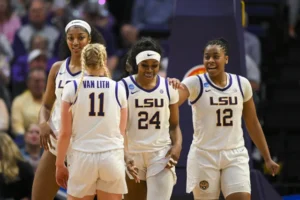
Huskies Humble the Streak: UConn Ends South Carolina’s 71-Game Home Run in Stunning Rout
In a season already marked by unpredictability and intensity, the No. 7 UConn Huskies delivered one of the most resounding statements of the year, dismantling No. 4 South Carolina 87-58 on their own floor and halting the Gamecocks’ 71-game home winning streak in unforgettable fashion.
From the opening tip, UConn played with a sense of urgency and focus that suggested it was not simply playing another road game—it was on a mission. Head coach Geno Auriemma’s squad came into Columbia with the weight of history and expectation looming overhead, yet they handled both with the poise of a program built for moments like these. For South Carolina, it was an evening that began with anticipation and ended in shock, as the crowd at Colonial Life Arena witnessed their team suffer its worst home loss in the Dawn Staley era.
The Huskies’ game plan was clear early: push the pace, stretch the floor, and take South Carolina out of its comfort zone. With sharp passing, relentless defense, and disciplined shot selection, UConn executed its blueprint to near perfection. Paige Bueckers once again proved why she is one of the most electrifying players in women’s college basketball, orchestrating the offense with brilliance and finishing with 24 points, 6 assists, and 4 steals in a statement performance. Her command of the game was matched by a supporting cast that refused to blink under pressure.
Aaliyah Edwards and KK Arnold added crucial production on both ends, with Edwards imposing her will in the paint and Arnold showcasing defensive tenacity that rattled South Carolina’s guards. The Huskies jumped out to an early lead and never looked back, outscoring the Gamecocks 26-12 in the first quarter and sending a message that this was going to be a different kind of night.
For South Carolina, the loss was as stunning in its magnitude as it was in its implications. The Gamecocks hadn’t lost at home since a February 2020 defeat to Mississippi State, and under Staley’s guidance, Colonial Life Arena had become one of the most formidable environments in the country. The streak—71 games in total—was the longest active home win run in Division I basketball. But against UConn, the Gamecocks never found their rhythm.
Turnovers plagued South Carolina throughout, as UConn’s pressure defense disrupted the Gamecocks’ flow and forced them into uncharacteristic mistakes. MiLaysia Fulwiley, the freshman phenom and emotional sparkplug for South Carolina, was held in check by a rotating cast of UConn defenders who clogged driving lanes and dared the Gamecocks to beat them from outside. They couldn’t. South Carolina shot just 34 percent from the field and 4-of-17 from three-point range, a stark contrast to their usual efficiency.
The Huskies also dominated the glass, out-rebounding South Carolina 41-30 and limiting second-chance opportunities that have often fueled Gamecocks comebacks. Perhaps most shocking was the way UConn controlled the paint—a place South Carolina traditionally rules with authority. With Edwards anchoring the interior and backup bigs stepping in to hold their ground, the Huskies neutralized South Carolina’s size advantage and turned one of the Gamecocks’ greatest strengths into a non-factor.
By halftime, UConn held a 45-27 lead, and the crowd—normally a force that helps South Carolina surge back into games—was rendered silent. The third quarter brought more of the same. Every time the Gamecocks tried to generate a run, the Huskies answered with a critical basket or defensive stop. When Bueckers hit a step-back three midway through the third to push the lead past 20, even the most loyal South Carolina fans began to realize the streak was in serious jeopardy.
To their credit, the Gamecocks continued to fight, but the deficit was simply too great against a UConn team that played with surgical precision. For the Huskies, this was more than a victory—it was a declaration that they remain a national powerhouse capable of beating anyone, anywhere, under any circumstances. After years of injury-plagued seasons and early postseason exits, this performance felt like a turning point, a return to form for a program that has built its legacy on moments like these.
Auriemma, who has seen his share of marquee wins in a Hall of Fame career, didn’t hide his pride after the game. “We came in here knowing what they’ve built, knowing how hard it is to win in this building,” he said. “But I told our players, ‘This is what UConn basketball is about.’ We’re not afraid of the moment. We’re built for this.”
Staley, meanwhile, acknowledged the humbling nature of the loss. “UConn came in here and played like a championship team,” she said. “They punched us in the mouth early, and we never really responded. We’ve got to learn from this. The streak was special, but what matters now is how we bounce back.”
For South Carolina, the defeat serves as a reality check, but not a death sentence. The Gamecocks remain among the elite in women’s basketball, and one game—no matter how lopsided—doesn’t define a season. But the loss will undoubtedly fuel introspection. Questions about rotation, perimeter defense, and offensive identity will rise to the surface, especially with postseason play looming in the distance.
As for UConn, this win propels the Huskies firmly into the national championship conversation. After battling through early-season growing pains and questions about depth and health, the Huskies now look like a complete team. The combination of Bueckers’ brilliance, a maturing supporting cast, and Auriemma’s tactical prowess gives UConn a blend of star power and system play that few teams can match.
What makes this win even more impressive is the historical context. UConn and South Carolina have developed a fierce rivalry in recent years, trading blows on the national stage and recruiting many of the same elite players. The Huskies had lost the last three meetings against the Gamecocks, including a decisive defeat in last year’s Final Four. To come into Columbia and win in such dominant fashion was not just about ending a streak—it was about flipping the narrative.
Indeed, for a program that has often played the role of Goliath, UConn embraced the chance to play David on this night. The Huskies relished the underdog role, knowing full well that the weight of expectation rested on the shoulders of the home team. They used it as motivation, and they delivered with a performance that will be remembered for years to come.
Now, the question becomes: can UConn sustain this level of play as the postseason approaches? If Saturday night was any indication, the answer appears to be a resounding yes. With Bueckers healthy and locked in, with role players embracing their responsibilities, and with Auriemma pushing the right buttons, the Huskies are peaking at exactly the right time.
Meanwhile, South Carolina must regroup. The end of the streak stings, no doubt. But it could also serve as a catalyst. In past seasons, Staley’s teams have responded to adversity with resilience. This team has the talent and leadership to do the same. But the path forward will require renewed focus and a willingness to adapt.
College basketball is a sport of moments, and this one belonged to UConn. The streak is over. The statement is made. And as March looms on the horizon, the Huskies have put the rest of the nation on notice: they’re back—and they’re not just looking to contend. They’re looking to conquer.





